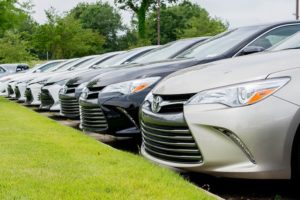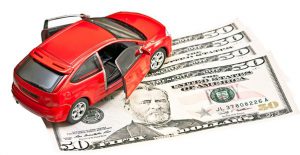Buying vs. Leasing Your Car: What’s the Difference?

Choosing between buying and leasing a car can be tough, and understanding the difference between these two purchasing options may feel stressful. Here are the significant distinctions between buying and leasing a car so you can be on your way to getting your new vehicle.
Ownership
Buying a car requires you to either save up or get an auto loan, but after you purchase the car, it’s yours for as long as you want. Even if you still owe money on the loan, it’s possible to sell a car as long as you still agree to pay off the rest of your loan. However, when you lease a car, you don’t own the vehicle. You get to use it, but you have to return it at the end of the lease term. You can choose to purchase a car you leased, but you must speak with your leasing company before making this decision.
Up-Front Costs
Getting a new car from a dealership usually requires a down payment, but you’ll always pay taxes, registration, and other fees to buy the vehicle. These expenses vary based on which car you choose to purchase and the location in which you live. Leasing is handled differently. You’ll pay first month’s payment, a refundable deposit, down payment, taxes, registration, and other fees.
Monthly Payments
Loans are usually longer terms of up to seven years, and payments are higher compared to leasing because you’re paying off the entire cost of the vehicle. Additionally, you’re paying off any interest from your loan and other finance charges, taxes, and fees through the dealership. Leases have lower payments because you’re only paying for the depreciation while you’re driving the car. You’ll also pay for rent charges, taxes, and fees.
Mileage
When you buy a car, it’s yours to drive as far and as long as you want. Keep in mind that the higher the mileage, the less trade-in or resale value the car will have. If you choose to lease, you’re limited to a number of miles you can drive each year. The number of miles you can drive annually varies from company to company, and if you go over the amount, you’ll be required to pay charges for exceeding your limits.
Early Termination
Some people who purchase a car choose to trade-in or sell the vehicle before their loan is paid off and the money from the sale is used to finish paying off the loan balance. While you are still responsible for the remaining balance on your loan, you are not bound to keep the vehicle as long as you pay off your loan. Early termination when you’re leasing a vehicle can be quite pricey, and it’s often about as expensive as keeping the car for the remainder of the contract.
End of Term
At the end of the loan term, you will have paid for your vehicle in full and no further payments are required. You can choose to keep the car or to trade it in as a down payment for another car. At the end of the term when leasing, you’ll have to finance your vehicle or lease another.
[banner-ad_2]
Excessive Wear and Tear
Owning means you can treat it however you want. You can clean it every weekend or never clean it. You don’t have to worry about excessive wear or tear unless you want to sell it at a later date, but it can decrease the value of your car. When you lease, you have to avoid excessive wear and tear because you’ll be charged for any damage to the vehicle.
Customizations
Buying a car means you can make as many customizations as you want as long as you can afford it. When you lease, you can’t make any customizations because you’ll be required to return the car in sellable condition. Any modifications or custom parts have to be removed before returning and any residual damage is going to come out of your pocket.




